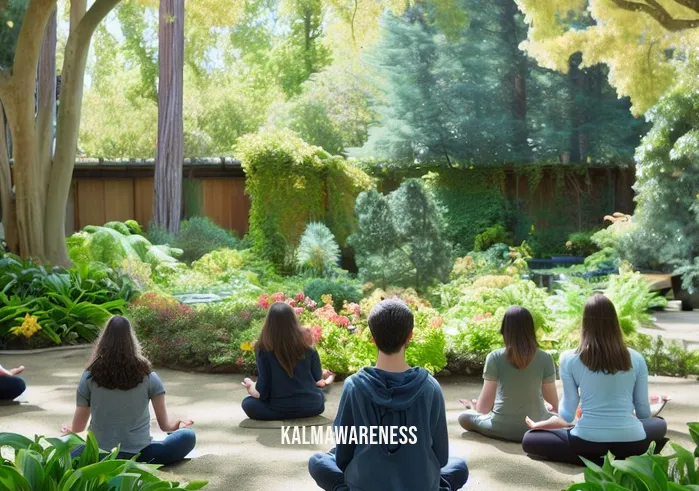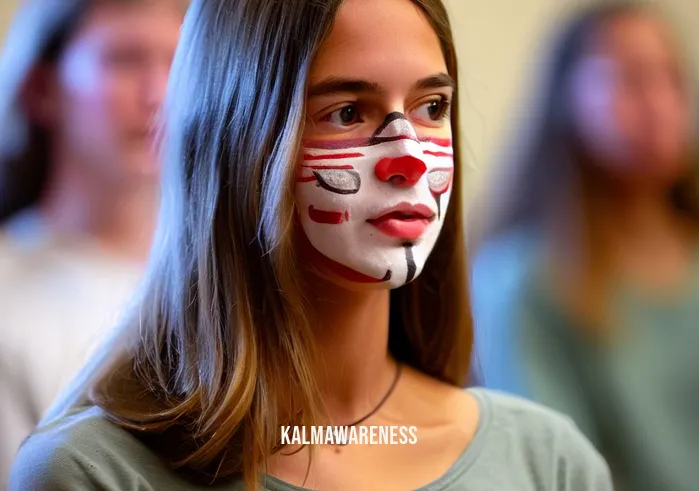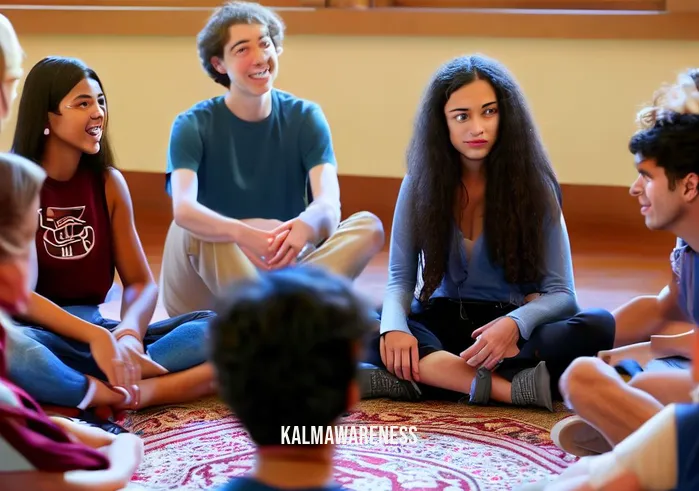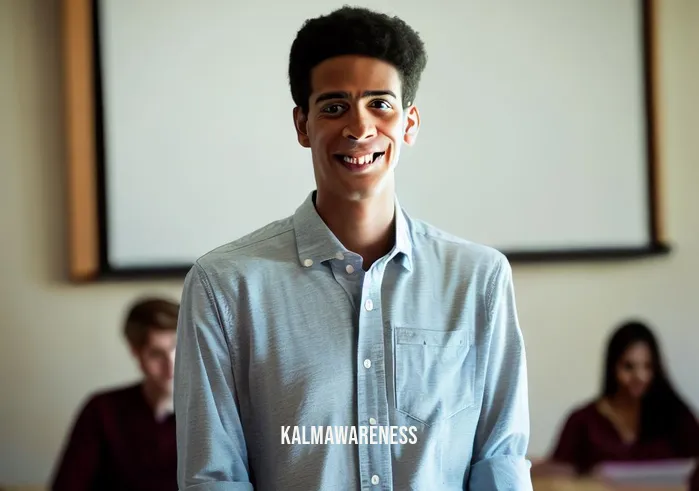The Stanford Mindfulness Class: Your Gateway to a Holistic Life
In an age characterized by the relentless hustle and bustle, taking a step back to focus on oneself has never been more crucial. This realization isn’t a mere philosophical idea but a scientifically-backed approach towards achieving a balanced life. A standout in the realm of self-improvement and well-being is the Stanford mindfulness class. With its solid foundation in the principles of mindfulness training, this course promises a holistic understanding of well-being by delving deep into the realms of the meditation program, stress reduction, wellness, and the intricate mind-body connection. As we embark on this enlightening journey together, this segment serves as your comprehensive guide, paving the path for the deeper explorations in the following chapters.
The Cornerstone of Wellness: Mindfulness Training
Mindfulness is not just a trend. It’s a practice deeply rooted in ancient traditions, and its contemporary importance is only magnifying. By cultivating a moment-to-moment awareness of our thoughts, feelings, and surroundings, we can navigate the chaotic waves of modern life with serenity and clarity. This 20-minute mindfulness meditation is an excellent starting point for beginners, offering a glimpse into the vast sea of potential that awaits.
Meditation Program: Beyond Just Sitting in Silence
Contrary to popular belief, meditation isn’t solely about sitting cross-legged and diving into a realm of silence. It’s an art, a discipline, and a way of life. Meditation courses like the one at Stanford cover a wide spectrum. From the divine Archangel Raphael meditation to the philosophical insights provided by Bruce Lee’s meditation techniques, the scope is vast and deeply enriching.
Stress Reduction: A Need of the Hour
Stress is, unfortunately, an unavoidable component of modern existence. However, how we respond to it is within our control. Techniques such as detachment from overthinking and understanding the spiritual meaning of lower back pain, a physical manifestation of stress, can provide significant relief. Adopting a mindful approach, like the strategies discussed in Tim Ryan’s books, can revolutionize our stress coping mechanisms.
The Interplay of Mind and Body
The body and the mind are intricately connected, each influencing the other in profound ways. Delving deep into the mindful body concept, one understands that physical ailments often have their roots in mental distress. Conversely, physical wellness can bolster mental well-being. For instance, the rejuvenating morning meditation drink not only nourishes the body but also centers the mind. On a similar note, understanding and practicing mindful drinking can lead to an enhanced appreciation of life’s simple pleasures.
The Broader Perspective: Wellness in Daily Life
Wellness isn’t limited to the individual. It extends to every aspect of life. By introducing mindfulness into daily activities, such as dog training or even the meals we prepare in Becky’s mindful kitchen, we integrate this holistic approach into our daily lives. Furthermore, centers like the mindful therapy center in Marlton expand this principle to therapeutic environments, offering healing and comfort.
In conclusion, the Stanford mindfulness class is more than just a course; it’s a transformative experience. It’s about cultivating a lifestyle that integrates mindfulness, meditation, stress reduction, and a profound understanding of the mind-body connection. As we proceed, the subsequent segments will delve deeper into each of these areas, offering insights, techniques, and the science behind them. So, for those eager to journey further into this enlightening path and uncover the myriad ways mindfulness can reshape your life, continue reading. The adventure has only just begun.

Stanford Mindfulness Class: Beyond The Basics
Stanford University, a renowned institution, is not just dedicated to technological innovations or groundbreaking research in sciences but also deeply committed to individual well-being and holistic health. The Stanford mindfulness class is a testimony to this commitment. An amalgamation of age-old wisdom, scientific methodologies, and practical applications, this course offers an unparalleled experience for those keen on enriching their lives with mindfulness practices.
The Three Pillars of Stanford’s Mindfulness Approach
Mindfulness, in its essence, isn’t a singular concept. It encompasses a range of practices, philosophies, and techniques. Stanford’s class stands out by focusing on three primary pillars:
- Holistic Healing: Diving deeper into the mind-body connection, the class emphasizes on approaches like mindful healing and understanding the role of healing forces in our lives.
- Practical Integration: It’s not about isolated sessions of meditation but integrating mindfulness in daily routines. Whether it’s through techniques like morning anxiety meditation or adopting principles of auto-compassion, the focus is on seamless integration.
- Empowerment Through Self-Care: Recognizing the power within, Stanford emphasizes the mantra that self-care is how you take your power back. By advocating this, individuals are motivated to prioritize their well-being.
Incorporating Mindfulness: Daily Activities & Routines
- Morning Rituals: Start the day with intention. Techniques like morning meditation drink ensure that both the mind and body are nourished.
- Mindful Interactions: From mindful dog training to mindful conversations, every interaction becomes an opportunity for mindfulness.
- Healing Through Frequencies: Recognize that solutions like using a particular frequency to get rid of headaches have both scientific and mindful bases.
- Nightly Decompress: Conclude the day by detaching from stressors. Techniques taught include easing the mind through practices inspired by I will ease your pain methodologies.
Stanford’s Mindfulness Class: A Snapshot
| Component | Description | Benefit |
|---|---|---|
| Holistic Healing Techniques | Incorporates practices like mindful healing | Addresses both mental and physical woes |
| Daily Mindfulness Integration | Techniques for daily routines like morning anxiety meditation | Seamless blending into daily life |
| Mindful Activity Sessions | Includes unique sessions like mindful dog training | Expands the scope of mindfulness |
| Empowerment Strategies | Focus on self-care and taking power back | Encourages self-worth and resilience |
| Customized Approach | Tailors techniques to individual needs | Ensures relevance and personal growth |
As we delve deeper into Stanford’s unique approach, it’s evident that the mindfulness class is more than a mere course. It is a journey towards self-awareness, healing, and empowerment. Each session, each technique, and every insight offered aims at facilitating a profound transformation in the participants. This focus on value, depth, and personal growth sets the Stanford mindfulness class apart, making it a beacon for all those seeking meaningful and lasting change in their lives.
With a solid foundation laid in our exploration so far, in the next segment, we’ll be diving into real-life testimonials and success stories. The transformative power of the Stanford mindfulness class comes to life through the experiences of those who’ve embarked on this journey. Their tales of change, resilience, and newfound clarity promise to inspire and motivate. So, for a closer look at these life-changing narratives and insights on how to make the most of the teachings, continue reading. The best is yet to come.

The Resonating Echoes of Stanford’s Mindfulness Course: Stories of Transformation
The allure of Stanford’s mindfulness class lies not just in its scientific foundations or ancient roots but in its undeniable impact on real lives. Over the years, countless individuals have tapped into the profound teachings of this course, weaving tales of transformation, resilience, and newfound hope. Drawing inspiration from these personal journeys, this segment sheds light on the profound changes fostered by the Stanford mindfulness program.
Real Lives, Real Change
Anna’s Journey of Healing: Struggling with the aftershocks of a traumatic event, Anna sought refuge in mindfulness. Through techniques like mindful therapy, she not only found a safe space but also began her healing journey. “In the stillness of meditation, I rediscovered my strength,” she shares.
David’s Reconnection with Self: Burnout took a toll on David, both mentally and physically. The concept of self-care being a way to reclaim power resonated deeply with him. “The class wasn’t just about relaxation; it was about reconnection,” David reflects.
Lakshmi’s Exploration of Depth: Coming from a culture rich in meditation practices, Lakshmi was skeptical. But the holistic approach of Stanford’s program, especially sessions like Bob Stahl’s mindfulness teachings, offered new perspectives. “It felt like I was rediscovering meditation, even though I grew up with it,” she states.
These stories, amongst many others, resonate a shared sentiment: the transformative power of the Stanford mindfulness class.
Pearls of Wisdom: Quotes that Inspire
Delving into the experiences of past attendees, certain sentiments consistently shine through. Here are a few quotes that capture the essence of their transformations:
“In the depths of silence, I found my voice. Stanford’s mindfulness course was my compass in the chaos.” – Michaela
“When I felt lost, the mindful healing techniques taught at Stanford became my guiding star. They didn’t just alleviate my pain; they illuminated my path.” – Jared
“It’s not about escaping reality but embracing it with clarity. The tools I gained from Stanford’s class were my armor in the battle of life.” – Estelle
Each quote is a testament to the impact of the course, echoing sentiments of hope, clarity, and rejuvenation.
The Ripple Effect
The Stanford mindfulness class isn’t just a personal journey. As individuals transform, so do their interactions, relationships, and communities. Sarah, a professional therapist, took the class intending to enhance her personal well-being. However, the profound changes she experienced led her to integrate techniques like auto-compassion into her therapy sessions. “It’s like a ripple. The peace I found in the class is now impacting dozens of my patients,” Sarah explains.
Stanford’s program isn’t merely a course; it’s a movement. One that aims at creating a domino effect of positive change, starting from the individual and reverberating through communities.
In conclusion, the Stanford mindfulness class serves as a beacon of hope and transformation. From tales of personal healing to the broader community impact, the class has proven its mettle time and again. As we move forward, the next chapter promises an even deeper dive. From understanding the science behind mindfulness to debunking myths, we’ll explore the intricacies of this holistic approach. For those intrigued by the power of mindfulness and eager to uncover the mechanisms driving these transformations, continue reading. The exploration into the heart of mindfulness awaits.

Dissecting the Stanford Mindfulness Class: A Comprehensive Breakdown
Stanford’s mindfulness class has undeniably captured the hearts and minds of many. Yet, what makes this program so transformative? In this segment, we’ll delve into the granular details, breaking down the individual components, techniques, and philosophies that constitute this life-changing course.
The Core Elements of Stanford’s Mindfulness Class
The effectiveness of Stanford’s mindfulness class lies in its well-curated blend of various elements:
- Holistic Curriculum: Not just focused on meditation, the class integrates a myriad of practices, ensuring a comprehensive approach to mindfulness.
- Scientific Basis: Grounded in research, every technique and practice taught is backed by science.
- Diverse Techniques: From meditation to mindful therapy techniques, the class offers a plethora of tools.
- Personalization: Recognizing the uniqueness of each individual, the program emphasizes a tailored approach.
Diving Deeper: Techniques Explored
Several techniques form the backbone of the Stanford mindfulness class. Here’s a breakdown of some key ones:
- Breathing Exercises: Central to mindfulness, various breathing methods are taught, aiding in relaxation, focus, and grounding.
- Guided Meditations: Led by experts, these sessions help participants delve deeper into their consciousness.
- Body Scan: A technique that promotes a keen awareness of one’s body, recognizing tension, discomfort, or relaxation.
- Mindful Eating: Transforming the act of eating into a meditative experience.
- Group Discussions: Encouraging participants to share experiences, challenges, and insights, fostering a sense of community.
Stanford’s Unique Features: What Sets it Apart?
Stanford’s program is distinguished not just by its curriculum, but by certain standout features:
- Expert Instructors: Learned professionals, often with decades of experience in the realm of mindfulness and meditation, lead the classes.
- Practical Workshops: Beyond theoretical knowledge, the class emphasizes hands-on sessions, ensuring practical application.
- Supportive Community: A group of like-minded individuals ensures a nurturing environment, fostering growth and mutual support.
- Resource Access: From detailed manuals to access to sessions like Becky’s mindful kitchen, participants are equipped with a wealth of resources.
Real-world Applications: Beyond the Classroom
While the teachings are profound, their true impact is seen in their real-world applications:
- Stress Management: Techniques learned prove invaluable in managing daily stresses and anxieties.
- Improved Relationships: With heightened awareness and empathy, interpersonal relationships witness positive shifts.
- Enhanced Productivity: With improved focus and clarity, tasks are executed more efficiently.
- Deepened Self-awareness: Participants often report a heightened understanding of themselves, their triggers, and their motivations.
In essence, Stanford’s mindfulness class offers a holistic journey, blending ancient wisdom, modern science, and practical techniques. Its profound impact on participants, as explored in previous chapters, is a testament to its efficacy and depth.
As we gear up to wrap up our exploration in the concluding chapter, we’ll be reflecting on the broader implications of adopting mindfulness. How does a mindful approach transcend personal well-being and influence societal structures, cultures, and communities at large? What’s the larger vision Stanford envisions through this program? For these insights and a holistic overview of the transformative power of mindfulness, continue reading. The culmination of our journey is just around the corner.

Reflecting on the Stanford Mindfulness Class: A Journey of Discovery
As we come to the close of our exploration into Stanford’s mindfulness class, it’s essential to pause, reflect, and appreciate the depths we’ve delved into. From understanding the foundational principles to diving into real-life transformations, our journey together has been enlightening, to say the least.
A Glimpse into Our Exploration
Our expedition into the realm of the Stanford mindfulness program has equipped us with:
- Foundational Knowledge: An understanding of the essence of mindfulness and its integration into daily routines.
- Techniques and Tools: Practical skills like morning anxiety meditation to auto-compassion that can be seamlessly adopted.
- Inspiration: Real stories of change and resilience that underscore the transformative power of mindfulness.
- Practical Insights: A clear breakdown of the techniques, principles, and unique features that make Stanford’s program stand out.
Applying What We’ve Learned
While understanding is the first step, true transformation lies in application. As we move forward:
- Integrate Mindfully: Whether it’s starting the day with a morning meditation drink or weaving in mindfulness during work breaks, find ways to make mindfulness a natural part of your day.
- Share the Knowledge: Discuss your insights with friends, family, or colleagues. Perhaps even consider enrolling in a class together!
- Stay Updated: Mindfulness, as a field, is evolving. Keep abreast of new research, techniques, and insights by revisiting resources like our magazine.
A Call to Action: Dive Deeper
Our exploration into the Stanford mindfulness class might be concluding, but your journey doesn’t have to end here. Delve deeper into the world of mindfulness, meditation, and holistic well-being by exploring other articles and resources we offer. Whether you’re curious about the spiritual meaning of pain or wish to discover the rejuvenating power of mindful drinks, there’s a wealth of information waiting for you. And if ever in doubt, or if you wish to revisit any section, our series on the Stanford mindfulness class will always be here for you.
Thank You for Joining Us!
It’s been an honor and pleasure to guide you through this enlightening journey. We’re immensely grateful for your time, engagement, and curiosity. As we continuously strive to bring valuable insights and transformative content, we promise that future editions will be as, if not more, enriching. Until then, stay mindful, stay curious, and remember: the journey towards self-awareness and well-being is as beautiful as the destination.





